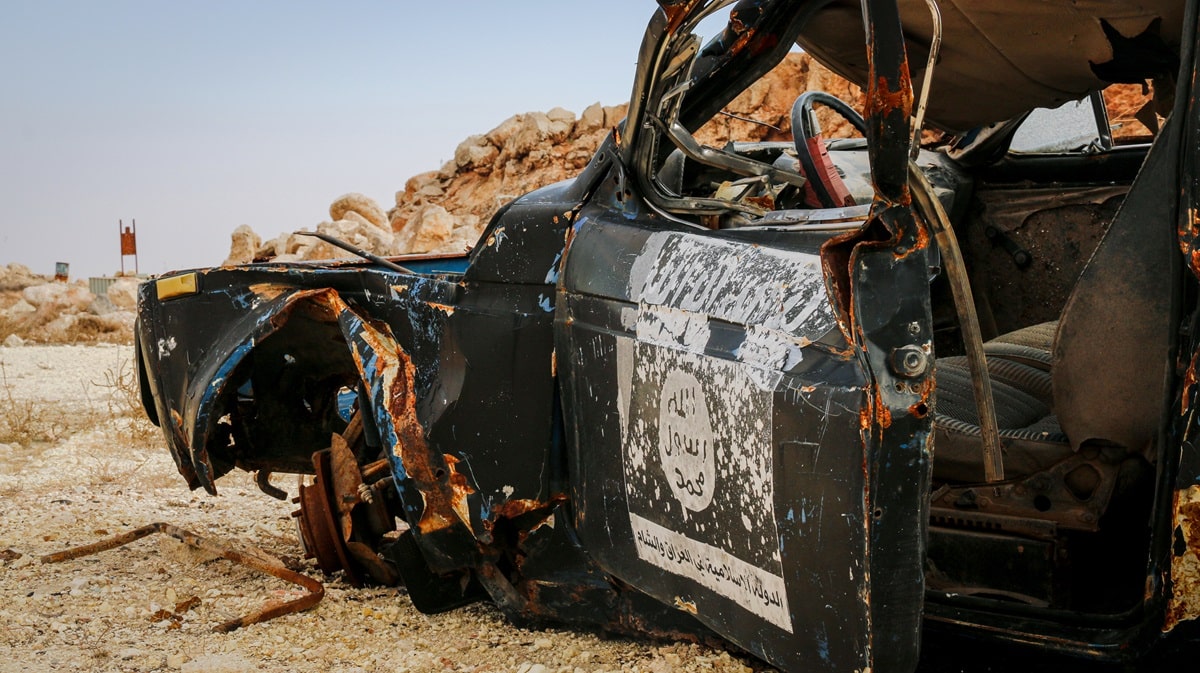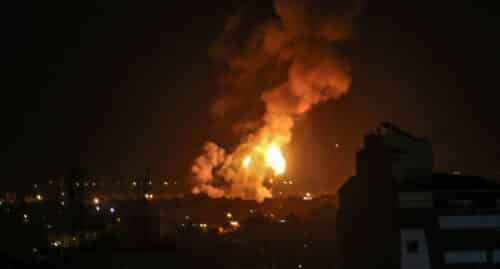
New Threat to the West: The Islamic State in Khorasan Province
The recent terrorist attack on a Moscow concert venue, one of the deadliest in Russia in decades, refocused global attention on ISIS, or more precisely on the Islamic State in Khorasan Province (ISIS-K), the Central Asian extension of ISIS, which immediately claimed credit. ISIS-K operates mostly in Afghanistan and Pakistan, but its goal is to establish an Islamic caliphate throughout the historic Khorasan region, which includes parts of Afghanistan, Pakistan, and Iran.
Causes for Accelerated Development of ISIS-K
After the 2017 defeat of ISIS in the Middle East subsequent to the battles of Mosul in Iraq and Rakkah in Syria and ISIS’s significant territorial losses, many felt that the extremist Salafist organization had been eradicated. However, ISIS, a breakoff and competitor of al-Qaeda, did not disappear.
ISIS-K was established at the end of 2014 by a group of radical activists who broke off from the Afghani-Pakistani Taliban. ISIS leaders declared the Khorasan Province official in early 2015, making ISIS-K the first ISIS extension outside Arab nations in the Middle East.
At its outset, ISIS-K consisted of several hundred fighters from the Pakistani Taliban. They were later joined by Afghani Taliban fighters who felt that the Taliban’s stance on the United States and the West was too moderate. Likewise, activists with the Uzbeki Islamic Movement, the largest terrorist organization in Central Asia, Sunni activists from the Shiite ayatollah regime in Iran, and activists from the Islamic Turkistan Party, including members of the Uygur minority living in northeast China also joined ISIS-K. Many of them found their inspiration in the Islamic State of Iraq and Syria and sought to replicate it. ISIS presented an ideology that included the establishment of a caliphate that would unite the entire Muslim world, which they could see actually happening in Iraq and Syria, in contrast to what the Taliban did not achieve or did not want to achieve in Afghanistan and beyond.
After becoming established in Afghanistan, the strength of ISIS-K was gradually eroded because of the limited support of local inhabitants, targeted assassinations by the United States, and the latter’s ongoing war with the Afghan army and the Taliban. Still, it would seem that the organization has to a large degree regrouped. How did this come about?
A special U.N. report issued in June 2023 warned that since the U.S. withdrawal from Afghanistan in August 2021, the various terrorist organizations such as al-Qaeda and ISIS-K continue to grow, multiply their manpower, and improve their fighting capabilities. They have greater freedom of action under the Taliban regime in the country and they exploit this to rebuild militarily and engage in attacks. The U.N. report revealed that al-Qaeda views Afghanistan and the new Taliban regime there as a safe haven for further activity. The report also showed that ISIS-K has exploited the Taliban’s ability to entrench its control of remote regions. Thus, ISIS-K has managed to gain strength, prevent desertions, and ramp up recruitment and attacks on senior Taliban officials.
Therefore, the renewed strength of ISIS-K is providing it with new opportunities to sow destruction and wreak havoc in Afghanistan and beyond. The recent attack on the concert venue in Moscow is a prominent example of the strength of this dangerous organization. On March 22, 2024, Crocus City Hall on the outskirts of Moscow witnessed a mass casualty attack by the Islamic State of Khorasan Province with gunmen wielding automatic weapons that they turned on the audience, shooting indiscriminately and killing 173 concert goers. What is less known is that on the same day the organization also carried out a suicide bombing in Kandahar, Afghanistan, which led to the deaths of 21 people.
In January of this year, ISIS-K carried out two attacks in Iran during a memorial service for Qassam Suleimani, the commander of the Quds Force of the Revolutionary Guards assassinated by the United States in 2020. The two attacks took the lives of more than a hundred people. As a rule, ISIS-K is the most active and consistent branch of the Salafist organization, particularly when it comes to attacks on European soil. In the past year, ISIS-K planned 21 attacks in nine countries, compared to eight in the previous year. It would seem that Afghanistan, which once sheltered Osama Bin Laden and the planners of the 9/11 attacks, is once again becoming a hotspot for global jihadist groups with worldwide ambitions.
Despite the struggle between the Taliban and ISIS-K, the growing strength of the extremist Salafist organization in the country is also the result of the U.S. withdrawal, which led to a significant decrease of targeted assassinations, and in practice created a convenient sphere of operations for jihadists to gain strength and recruit more personnel to threaten the West.
One of the reasons for ISIS-K’s resurgence of strength and the reawakening of al-Qaeda in Afghanistan is the fact that the United States redirected its intelligence resources in the Middle East and Southern Asia to focus on China and Russia. While the United States is betting on other centers, ISIS-K continues to attack many targets in Afghanistan.
Shortly before the lethal attack on Crocus City Hall, concern about the rising threat of Afghanistan-related terrorism made Lieutenant-General Michael Corella, Commander of the U.S. Central Command (CENTCOM), warn that the risk of an attack emanating from that country was growing, noting in particular the role of ISIS-K. He also claimed before the U.S. Congress that the Islamic State in Khorasan Province retains the ability and desire to harm American and Western interests.
Europe, too, is growing increasingly worried given the Euro Cup being played in Germany and the Olympic Games in Paris. In an interview with the daily Süddeutsche Zeitung, German Minister of the Interior Nany Faeser said that the Islamic State of Khorasan Province is presently the biggest Islamist threat to Germany and that the danger posed by Islamist terrorism is still acute. Faeser’s comments reflect the concern and vigilance of the German security forces, which have managed to foil a number of ISIS-K plots to carry out attacks over the past 18 months. These successes, some of which took place in Austria, include the prevention of attacks targeting Chrisitan sites on Christmas. In Vienna, three terrorists allegedly planning to attack St. Stephen’s Cathedral, the symbol of the city, were arrested, while in Germany, four Tajiki terrorists planning to massacre the congregation attending services in the famous Cologne Cathedral on New Year’s Eve were apprehended.
Al-Qaeda: Reawakening Under the Taliban’s Auspices
U.S. intelligence sources feel that unlike the growing strength of ISIS-K, al-Qaeda in Afghanistan has been without a senior leader since the assassination of Ayman al-Zawahiri in July 2022. The same sources also claim that al-Qaeda has not redeployed throughout the country. However, there are signs that the organization is coming back to life in Afghanistan. According to a June 2023 report by the U.N. Sanctions Committee, al-Qaeda has established new training facilities in the country’s Kunar and Nuristan Provinces. It is worth remembering that current al-Qaeda leader Saif al-Adel is based in Iran and that several nations have concluded that he visited Afghanistan as early as 2022.
Al-Qaeda is again active in Afghanistan just as it was before planning the 9/11 attacks: it is running training camps, participating in the growing and smuggling of drugs and reaping of profits, and providing funds to its affiliate jihadist organizations around the world. The Salafist organization is closer than ever before to the Taliban and shares with it the profits from despoiling Afghanistan’s natural riches and stealing international aid designated for the millions of impoverished Afghani citizens. Moreover, the organization’s operatives are also serving as members of the Taliban regime.
After regaining control of the nation in August 2021, the Taliban incorporated many groups listed as terrorist organization, which fought with it against the U.S.-supported Afghani republic, into its regime. Its relationship with al-Qaeda did not end, and Bin Laden’s vision of a global caliphate based in Afghanistan became the guiding principle of the war that restored the Taliban to power. Relations between the two radical organizations made the headlines once again when Ayman al-Zawahiri, al-Qaeda’s no. 2 and Bin Laden’s successor, was assassinated in Kabul by a U.S. drone in July 2022. Al-Zawahiri was connected to the Haqqani network, a terrorist group with links to the Taliban and also a participant in the al-Qaeda leadership. The network’s leader is Jalaluddin Haqqani who also serves as the deputy head of the Taliban. Furthermore, members of the Haqqani network are officials in the Taliban’s Interior Ministry in charge of security. This is how the close connection between the two organizations functions: the Taliban provides al-Qaeda commanders and operatives with all they need, from weapons and living quarters, through passports and other documents, to access to the vast drug smuggling network constructed over decades in order to establish the heroin empire under the Taliban’s auspices.
This is how the system that is building Afghanistan and entrenching it as a hothouse for terrorism works: terrorists from Yemen, Libya, and Somalia as well as Palestinians train in the renewed training camps run by al-Qaeda, which receives full backing from the renewed Taliban regime. The phenomenon is a warning sign. Leaders of neighboring and regional nations, such as Iran, Pakistan, Russia, Saudi Arabia, and Central Asian states, have already expressed concern about the threat posed to them by the Taliban’s transnational ambitions. The Taliban, as a jihadist organization, strives to establish a global Islamic caliphate but argues that the time has not yet come. What should concern the world even more in terms of its ambition to establish a global Islamic caliphate is the Islamic State of Khorasan Province and al-Qaeda. The recognition of the Taliban as the legitimate ruler of Afghanistan strengthens the Taliban’s access to resources and positions it in the perfect spot to use them to its ends and the ends of its partners, i.e., al-Qaeda and other terrorist organizations affiliated with it, such as Tehrik-e Taliban Pakistan, al-Qaeda in Yemen, al-Qaeda in the Indian subcontinent, al-Shabab al-Mujahadeen in Somalia, and others.
The hothouse nurturing terrorism in Afghanistan is gaining strength. The West is yet again making the mistake of thinking that it can negotiate or otherwise interact with a radical organization such as the Taliban, not understanding the jihadist rationale upon which it operates and on which its relationship with terrorist organizations like al-Qaeda is based. It is true that the Taliban fought ISIS, but both organizations have the same goal: the establishment of a global Islamic caliphate. The only difference between them is their understanding of the correct timing and the correct attitude towards other minorities and “infidels.” In addition to the West’s lack of understanding of the fundamentals informing jihad and the ideology of Islamic terrorism, many thought that ISIS’s defeat in Iraq and Syria spelled the end of the organization. However, it is difficult if not impossible to eradicate ideas and ideologies. This is how ISIS has managed to reestablish itself in places where a vacuum of governance was created after the withdrawal of world powers from zones of conflict, such as the United States from Afghanistan and France from Mali, to name just two examples.
Whoever thinks that if ISIS-K is defeated, ISIS and all its extensions will become a thing of the past is not only mistaken but also misleading others. ISIS is gaining strength not only in Afghanistan but also and primarily in Africa. While ISIS and al-Qaeda are competing with one another throughout the world (the two are fighting one another in Somalia and also in West Africa), they are also gaining strength and recruiting operatives and supporters throughout the West. The terrorism hothouse is located not just in Afghanistan. The West must realize that a new Afghanistan is liable to be created in Africa or in Asia at any time where it can attack Western targets at the time of its choosing.
The views expressed in this article are those of the author and do not necessarily represent the views of the movement





